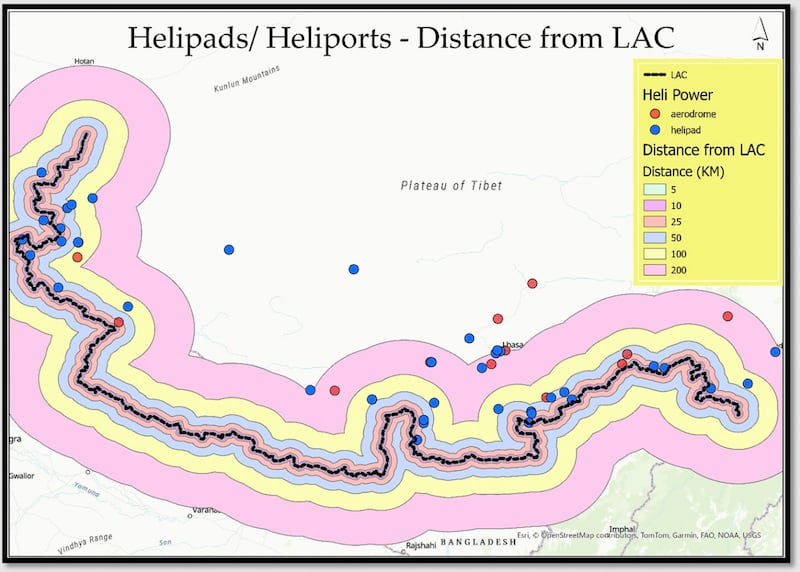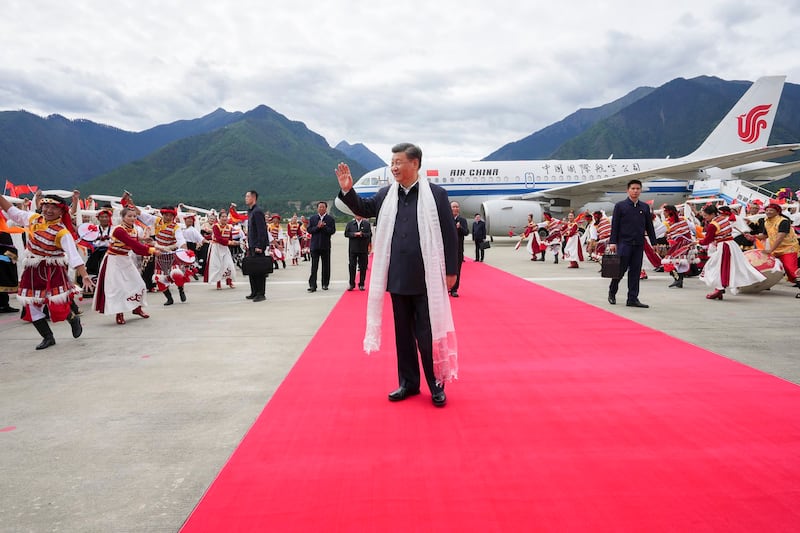China has built a new heliport in Tibet near the Indian border, satellite photos show, a move that experts say would allow Beijing to rapidly deploy troops to remote areas during an armed clash with India.
According to satellite imagery and geospatial intelligence experts, China has quickly constructed a heliport that features a 600-meter runway and multiple hangars in Nyingchi, just 20 kilometers (12 miles) from the disputed border with India.
It is in Tibet’s Zayul county near the strategically sensitive “fishtail sector” of the Indian state of Arunachal Pradesh.
"This facility will likely enhance China's ability to swiftly mobilize troops to forward positions and would improve its border patrols," said geospatial intelligence expert Damien Symon who earlier this week highlighted the existence of the heliport on X.
The heliport is the latest addition to China’s extensive network of military installations in the southern part of the Tibetan Autonomous Region, underscoring Beijing’s concerns over security along the border area. It follows Beijing’s practice of building model villages near contested areas, which then double as surveillance outposts.

China and India have competing claims on territory along the disputed 1,130-kilometer (700-mile) border between Tibet and India’s Arunachal Pradesh state. They still observe the McMahon Line, a colonial boundary between Tibet and British India dating back to 1914, with China claiming areas south of the McMahon Line.
2021 clash
Chinese President Xi Jinping visited Nyingchi in 2021, a year after thousands of Indian and Chinese troops clashed in the western Himalayas after Beijing's forces intruded into Indian territory. Deaths were reported by both sides in the fighting.
“The key importance of this newly built heliport is its proximity to the Indian border,” said Tenzin Younten, a strategic and open source intelligence analyst. “China has been steadily strengthening its military presence in the region, with a particular focus on helicopters.”
The heliport, near the banks of the Khangri Kabu Chu river, was cleared of thick vegetation for construction in early October 2023, said Dr. Y. Nithiyanandam, professor and the head of the Geospatial Program at the Bengaluru, India-based Takshashila Institution.

Helicopters enhance the Chinese military’s high-altitude operational capability, and heliports like the one in Nyinchi could serve as logistics hubs and allow for rapid troop and equipment movement, he added.
‘Accelerating its efforts’
Younten, an associate fellow at the India-based Centre for Contemporary Studies in Security and Technology, noted that India has significantly more heliports along the India-China border than the Chinese military.
“China is aware of this and may be accelerating its efforts to expand its air force infrastructure, including heliports, in the area,” he said. “Heliports built near the Indian border are primarily for military use rather than tourism.”
RELATED STORIES
[ China’s ‘virtual invasion’ of India and the cultural genocide of TibetOpens in new window ]
[ China names 30 places in India-controlled Arunachal PradeshOpens in new window ]
[ Chinese President’s Visit to Tibet Sends a Message to India, Experts SayOpens in new window ]
By 2035, China plans to construct around 59 general aviation airports and approximately 200 helipads in Tibet, Younten said.
It's likely that India will soon counter-develop in the area of the new heliport, said Dr. Atul Kumar, a fellow at the Observer Research Foundation.
Formerly an independent nation, Tibet was invaded and incorporated into China by force nearly 70 years ago, after which Tibet’s spiritual leader the Dalai Lama and thousands of his followers fled into exile in India and other countries around the world following a failed 1959 uprising against China.
Chinese authorities maintain a tight grip on the region, restricting Tibetans’ political activities and peaceful expression of cultural and religious identity, and subjecting Tibetans to persecution, torture, imprisonment and extrajudicial killings.
Edited by Matt Reed and Malcolm Foster.
